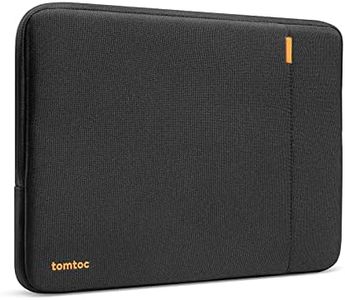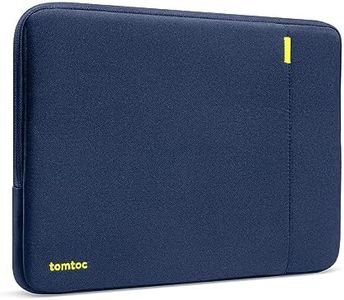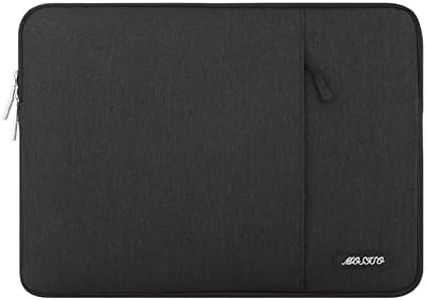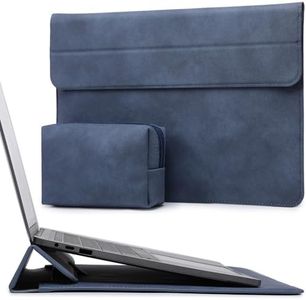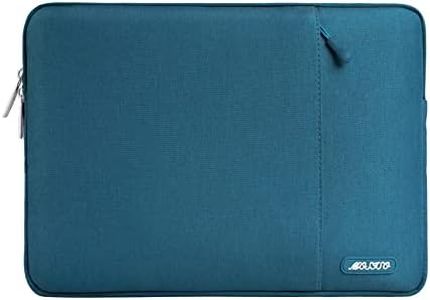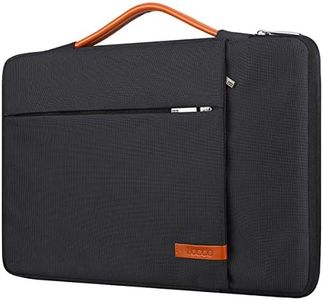We Use CookiesWe use cookies to enhance the security, performance,
functionality and for analytical and promotional activities. By continuing to browse this site you
are agreeing to our privacy policy
10 Best Laptop Sleeves
From leading brands and best sellers available on the web.Buying Guide for the Best Laptop Sleeves
When selecting a laptop sleeve, your main goal is to protect your device from everyday hazards like scratches, minor bumps, and accidental spills. A sleeve should fit your laptop snugly while also reflecting your style and making it easy to carry or pack. It's also important to consider where and how you'll use the sleeve—are you transporting your laptop in a backpack, carrying it alone, or storing it at your workplace? By understanding your needs and knowing what to look for in key features, you can choose a laptop sleeve that keeps your device safe and suits your lifestyle.Size CompatibilitySize compatibility refers to how well the sleeve fits your laptop. It's crucial because a sleeve that's too tight can make inserting or removing the laptop difficult and could even damage the device, while one that's too loose won't provide adequate protection. Sleeves usually list their compatibility by laptop screen size, such as 13-inch, 15-inch, or 17-inch. To pick the right one, check your laptop's exact dimensions (including thickness) and compare them to the sleeve's internal measurements. Always aim for a snug fit without much excess space, as this offers the best protection.
Padding and ProtectionPadding is what shields your laptop from knocks, drops, or bumps. Good padding absorbs impact and keeps your device safer if it's jostled in a bag or dropped onto a desk. Sleeves range from ultra-slim options with minimal padding (which are lightweight and good for basic scratch protection) to thicker, cushioned sleeves that offer extra impact resistance. If you plan to carry your laptop alone or expect it to face more bumps, go for a sleeve with thicker, denser padding. For light protection inside another bag, a slimmer, more compact sleeve may be enough.
MaterialThe material of the laptop sleeve determines how well it protects your device and how it feels and looks. Common materials include neoprene, fabric, leather, and synthetic blends. Neoprene is water-resistant and cushions well against bumps. Fabric sleeves can be lighter and more stylish but may offer less water resistance unless treated. Leather and faux leather look professional and are durable but may be heavier. Think about where you'll use the sleeve—if you want weather resistance, go for neoprene or coated fabrics. For style and office use, leather or smart fabrics may be best.
Closure TypeThe closure is how the sleeve opens and closes to secure your laptop. Common types are zippers, magnetic flaps, Velcro, or simply slip-in designs. Zippers provide the most secure closure but need to be smooth and well-padded to prevent scratching the laptop. Magnetic flaps are convenient and quick. Slip-in sleeves are the simplest and slimmest but offer less protection if the sleeve is turned upside down. Choose zipper or magnetic closures if you'll be moving around a lot, and opt for simple slip-in styles if the sleeve will mostly stay in a bag.
Portability FeaturesPortability features include handles, shoulder straps, or external pockets. Some sleeves are minimalist, while others add these features to make carrying and organization easier. Handles and straps allow you to carry the sleeve on its own, while pockets can hold chargers, pens, or notes. If you need to travel light or frequently move between places carrying only your laptop, a sleeve with handles or a strap is useful. For slipping the laptop into another bag, a plain sleeve without extra bulk is better.
Water ResistanceWater resistance helps protect your laptop if you get caught in the rain or spill something nearby. Some sleeves use waterproof materials or coatings, while others offer just basic splash resistance. If you often move with your laptop outdoors or in unpredictable environments, look for a sleeve with clear water resistance claims. If you use your sleeve mainly indoors or within another bag, basic protection against minor spills will probably be enough.
